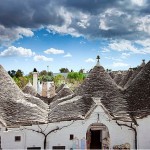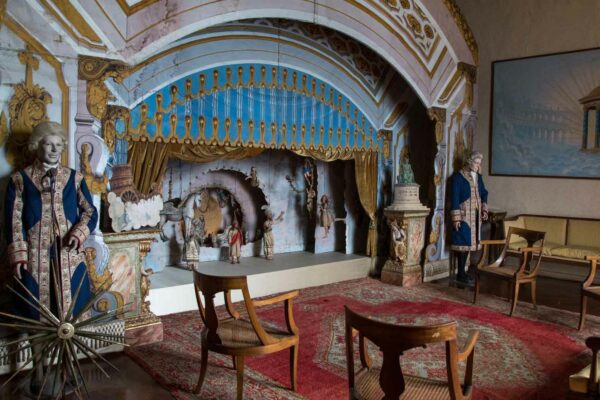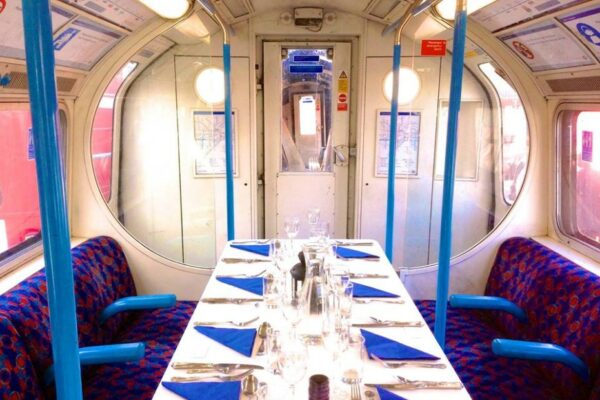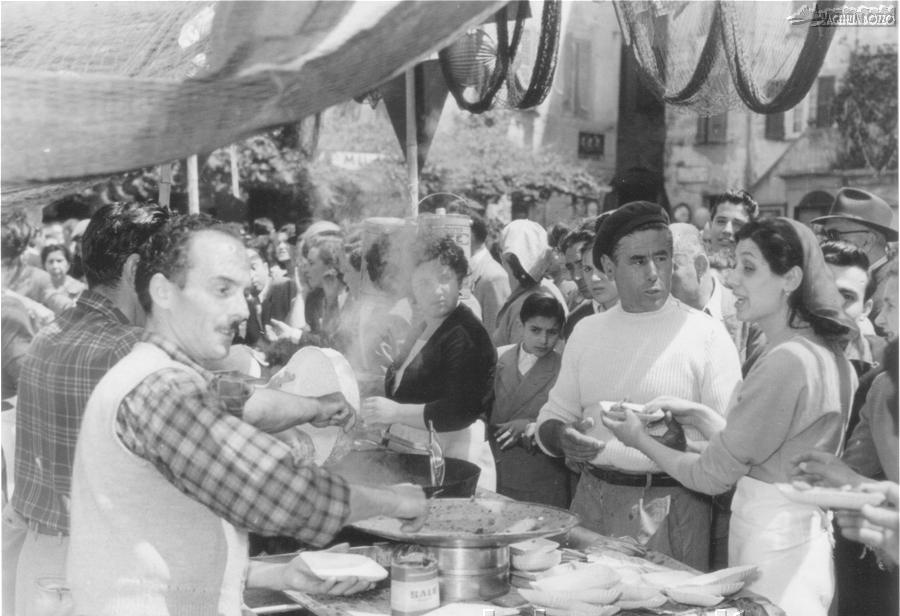
You’re invited to local food feasts all over Italy – if you know the magic word, that is. Sagre! That’s Italian for festival, one that centres around the annual harvest, celebrating local culture and most importantly – food! So what’s your weakness? Pizza? Pasta? Truffles? Fritto misto alla Piemontese? Whatever your preference, somewhere in Italy, between spring and autumn there will be a festival on a piazza dedicated to your favourite Italian dish. Posters advertising sagre are put up in towns across the country; colourful invitations to celebrate Italian produce and specialties with the locals – and it’s the perfect excuse to plan an entire road trip around eating…
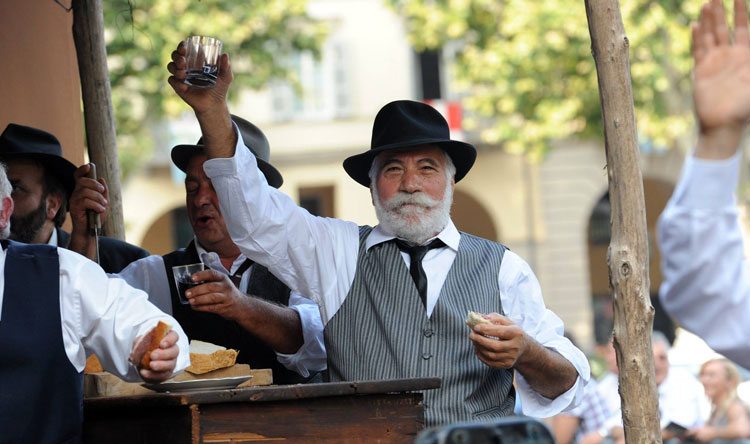
Sagra season transforms travelling through Italy into an immersive voyage through the most delicious and intriguing menu. From north to south, bill posters that you might not otherwise notice in the streets are your invitation to these local feasts…
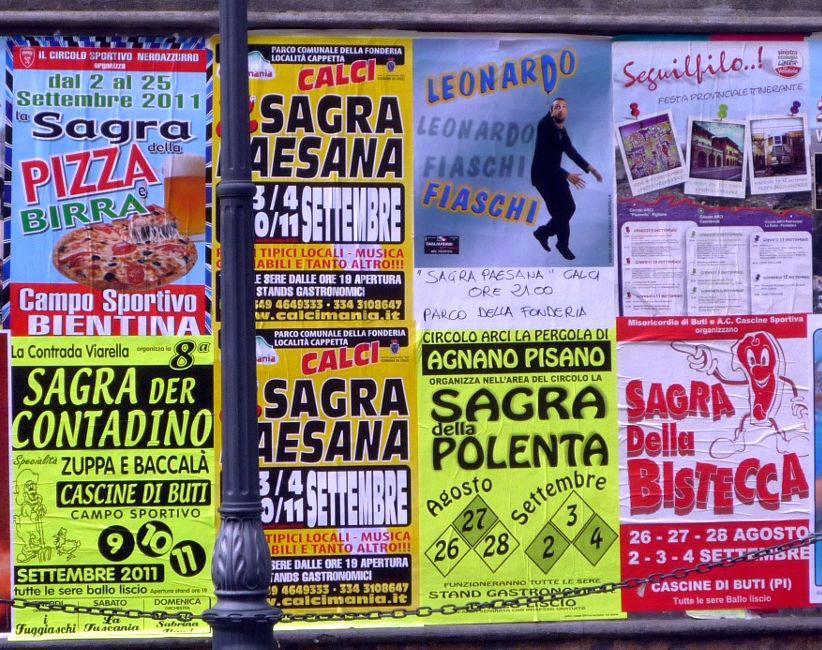
The annual festivals brings the entire town to its piazzas and parks to enjoy either a recipe or an ingredient that is unique to the specific locality. Dining at one of these neighbourhood gatherings is like taking a bite out of the landscape: town to town you’ll taste the rolling hills that strengthen the pigs, the sweet sunshine that ripens the fruit. You will find a sagra (the singular of sagre) for every conceivable dish available in the country, which go way beyond margaritas.
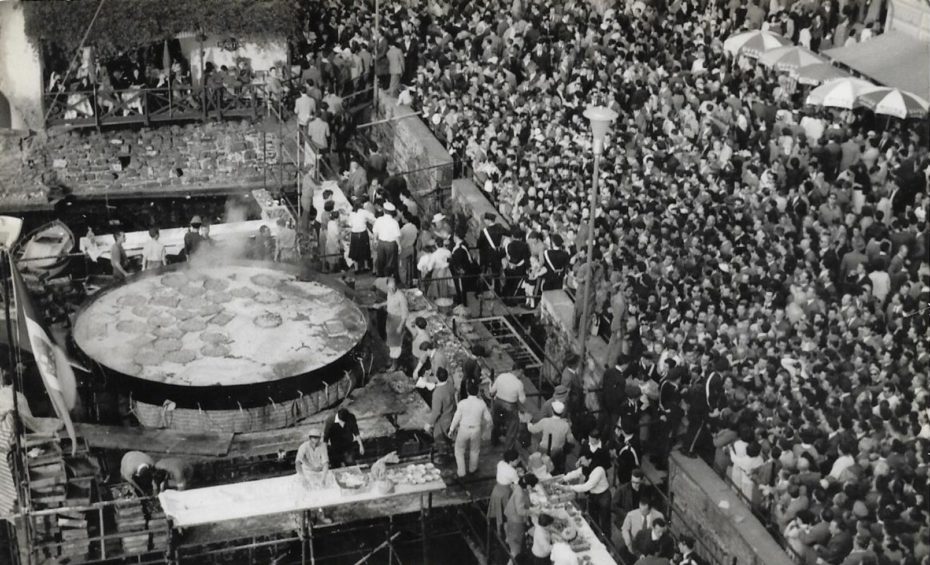
These feasts with religious roots can be traced back to ancient times, taking place in temples or churchyards. The causes for celebration varied from saints and holy days to the harvest. Today, over 5,000 such events take place throughout the country. The Sagre (singular: sagra) typically start during the warm season but the most anticipated ones take place in September along with the end of the harvests – all the more reason to avoid the influx of high season tourists and plan your visit to Italy at the end of summer.
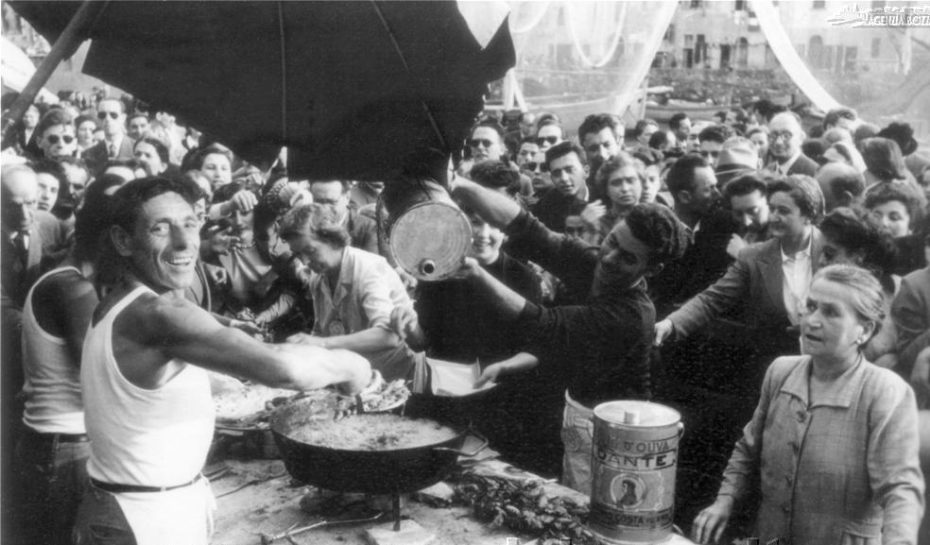
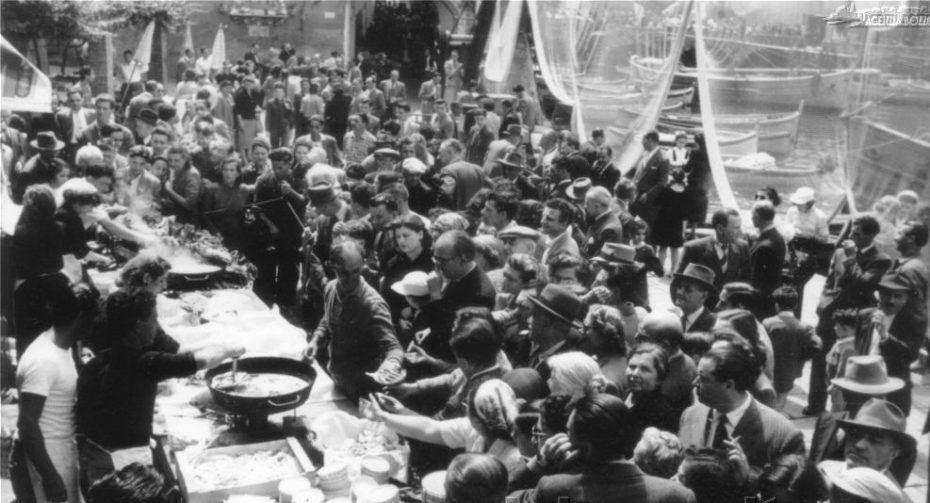
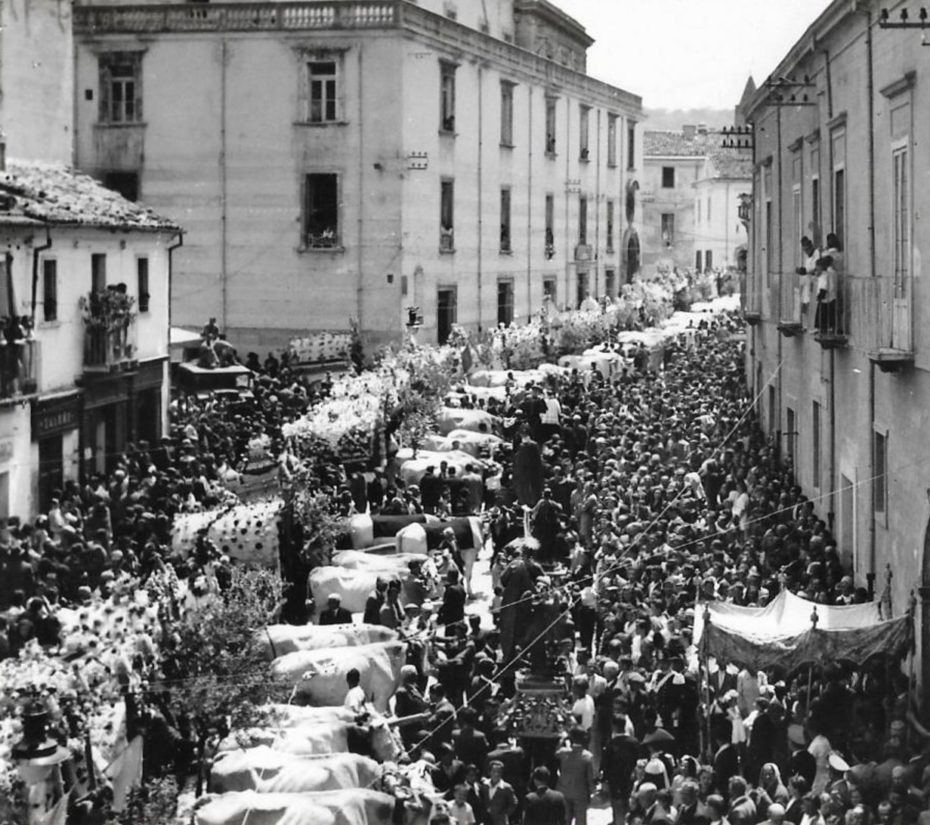
If you’re trying to plan in advance, the best option is to brave googling Italia sagra calendario for Italian results, or searching through sagra events on Facebook. Once you find a comprehensible calendar, you can begin to refine your search by address or date or, if you’re a true gastronaut, by ingredient.
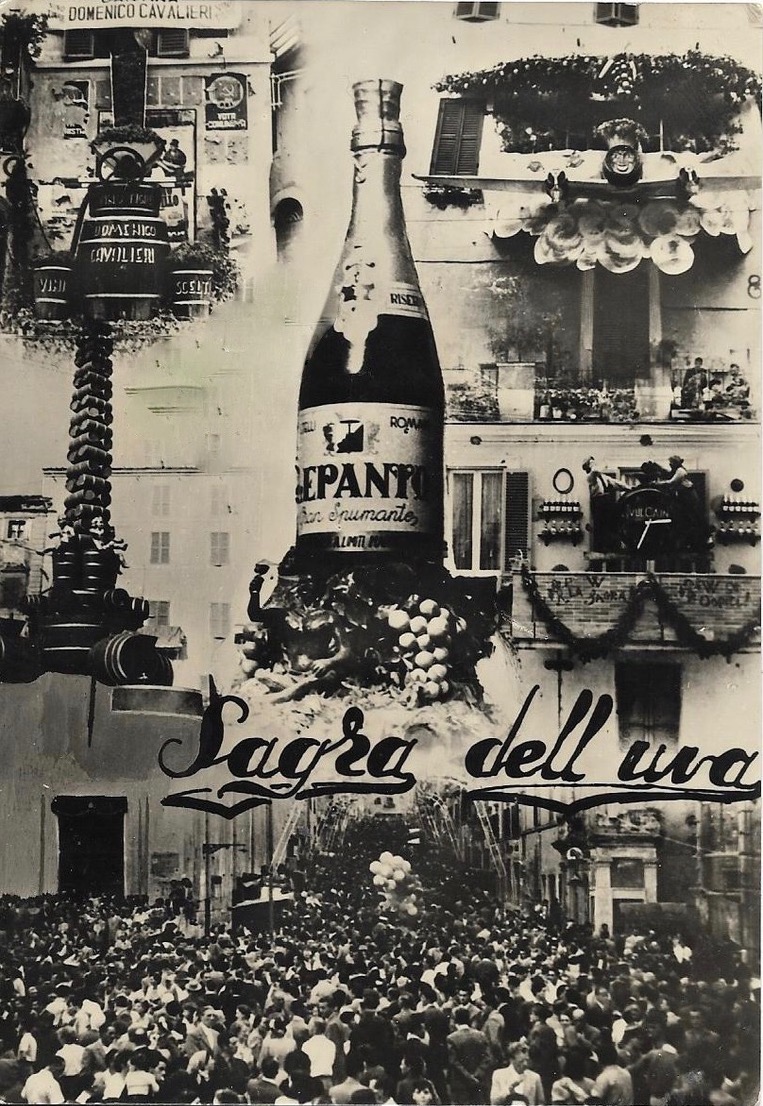
For obvious reasons, the Sagra dell’Uva in Marino, where wine has flowed freely from the town’s fountain every year since 1925, is one of the most popular on the schedule.
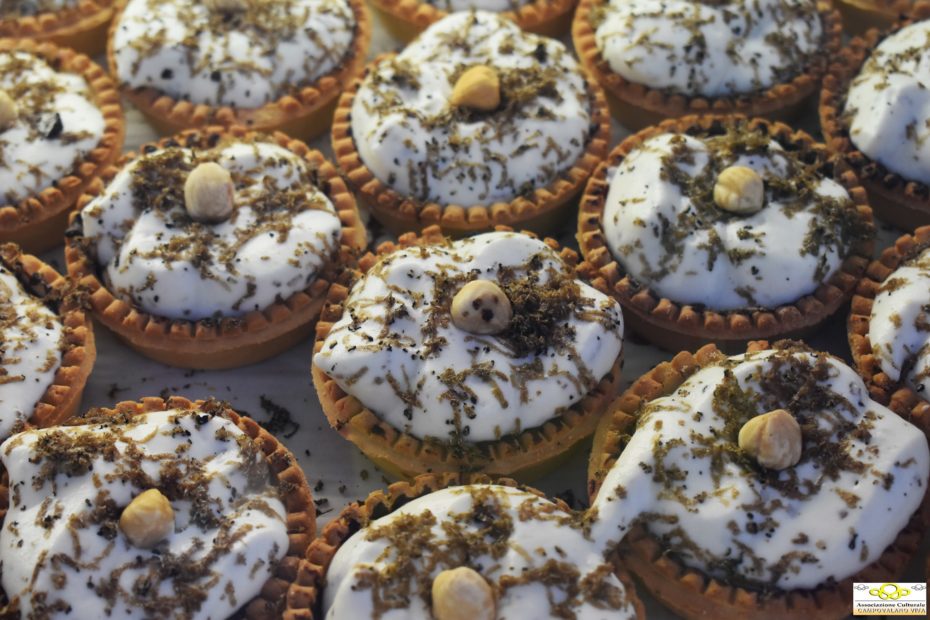
There are also over 80 festivals dedicated to tartufo – truffles – that we would happily spend the entire season hopping between. The coast offers fish, the mountains pork and chestnuts. The cittadella dei giovani in the Aosta Valley offers mozzarella di bufala. All for around 5€ a plate.
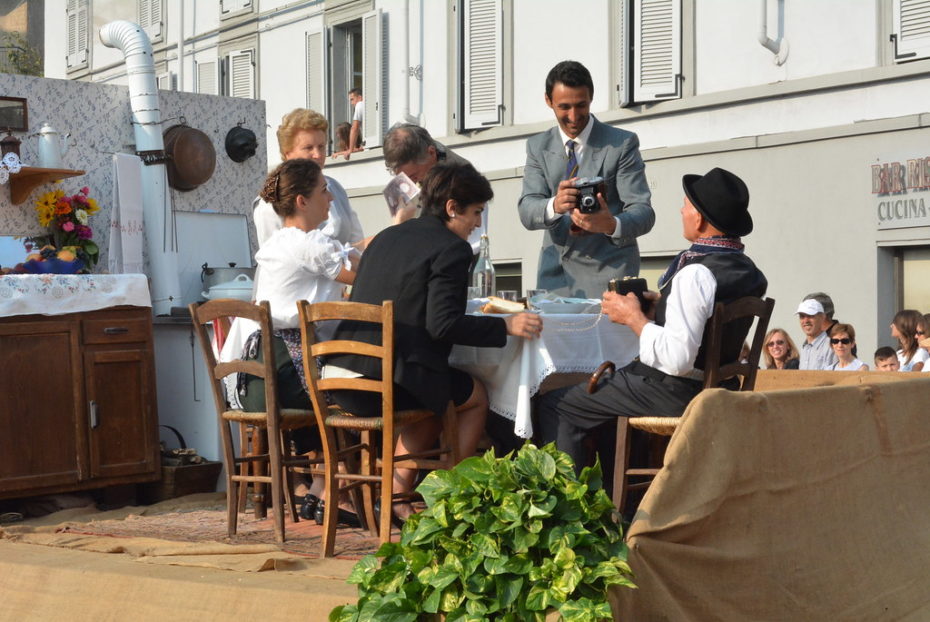
The festivals are also an opportunity to celebrate local history as well as patron saints, which is done with varying degrees of eccentricity. Many communities will stage battle re-enactments, such as the sagra of San Giovanni on Lake Como, which is illuminated with an enormous firework display. Asti, in Piedmonte, however, takes celebrations to the next level with the somewhat meta Festival delle Sagre Astigiane, AKA the Sagra delle Sagre, AKA the Festival of Festivals.
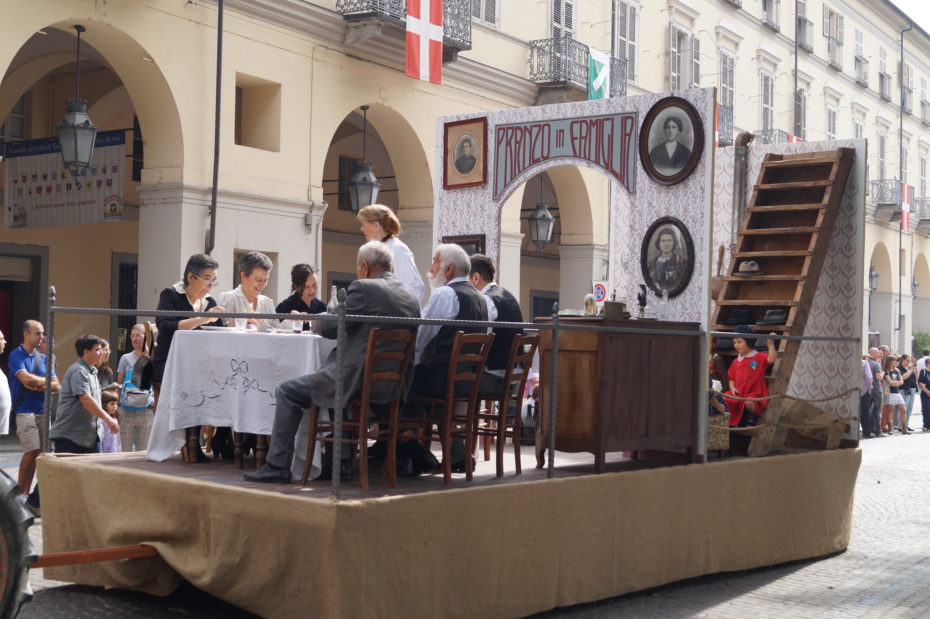
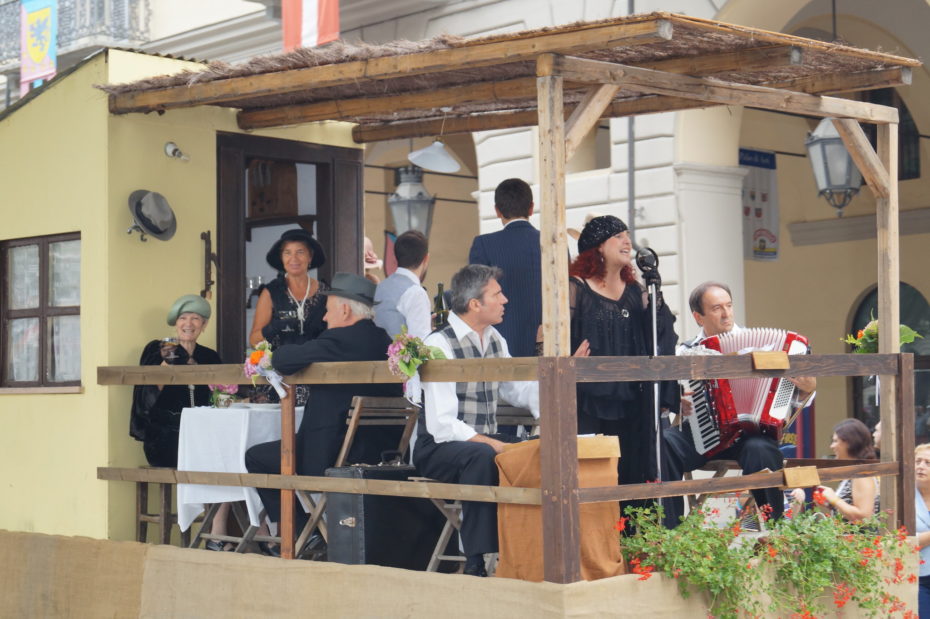
Taking place over a weekend in early September, it is entirely dedicated to the customs and traditions of country living. Proceedings reach their pinnacle on the Sunday with a parade through the town, wherein some 3,000 participants dig out their best vintage outfits and ride theatrical floats depicting every detail of traditional, everyday life from the bedroom to the bar and the kitchen to the farmer’s field.
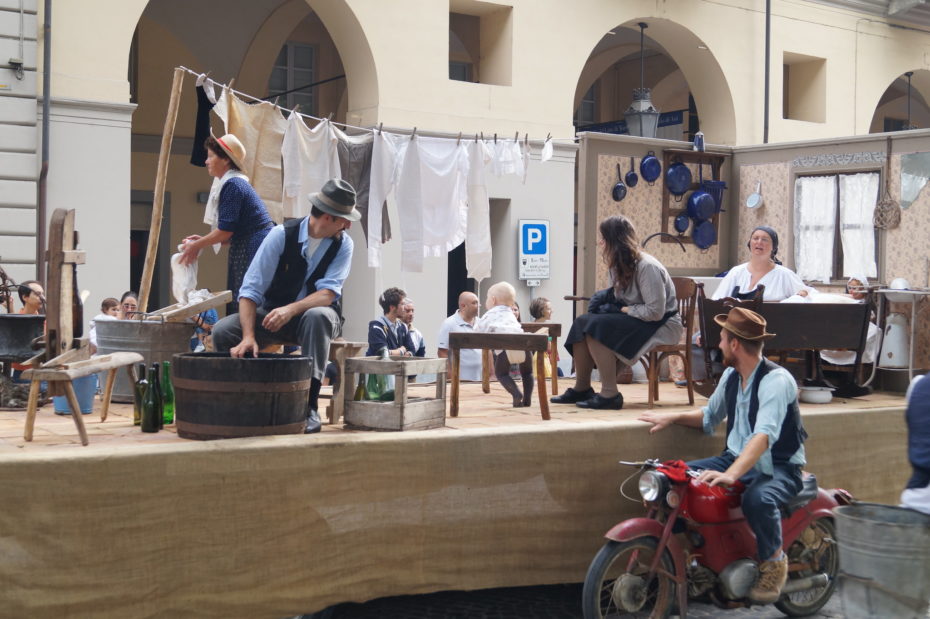
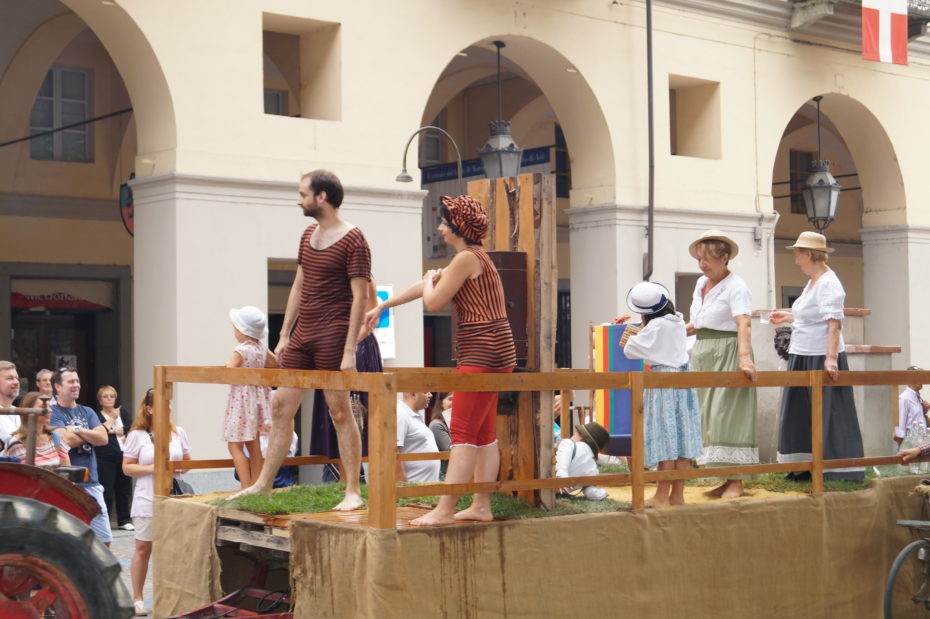
Everyone gets involved with the pageantry, from the Nonnas to the littlest members of the family in reenacting la Dolce Vita….
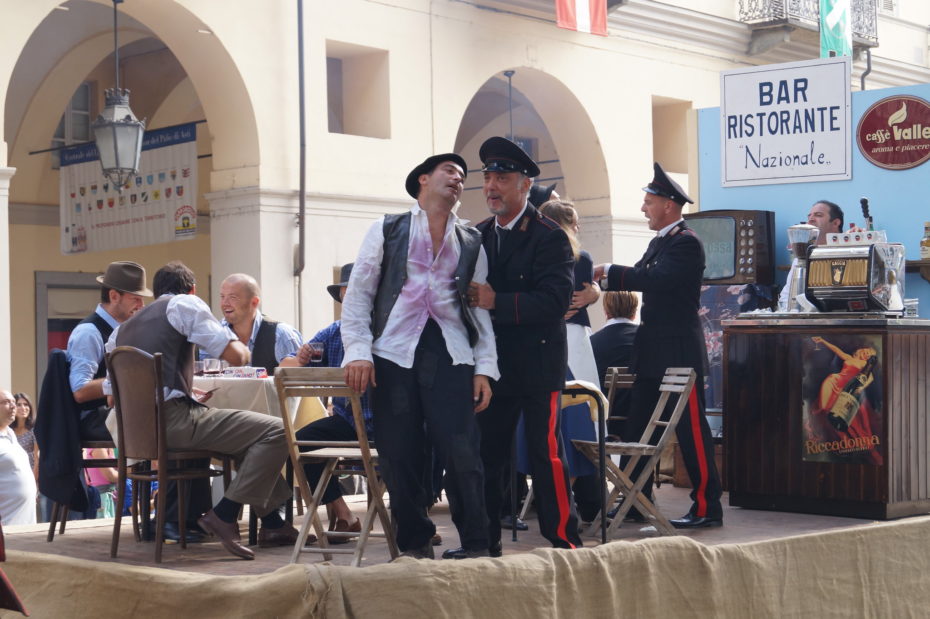
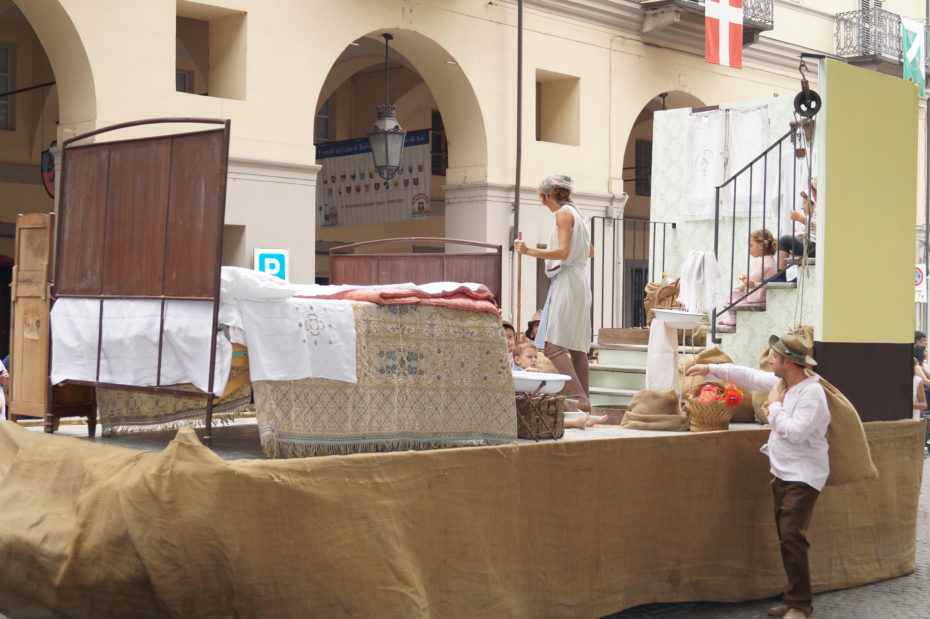
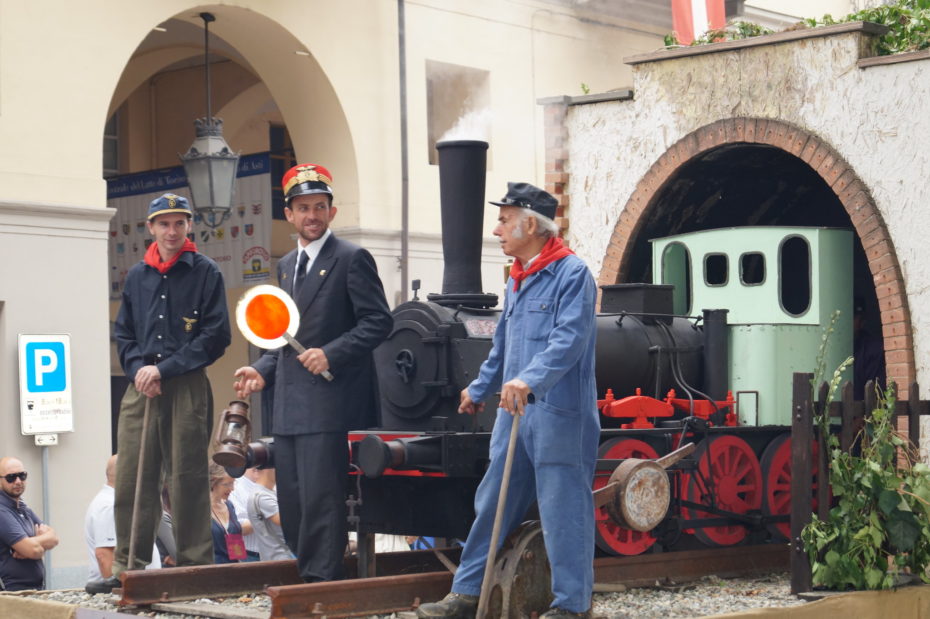
You can take a look at some of the fantastic parade floats created for the sagra here.
Some neighbourhoods make the most of these assemblies by doubling up festivities and staging regional heats of Miss Italy – which, in many ways, is itself a regional heat of Miss World. I can’t say for certain how often this occurs, but I will never forget the night I spent in the mountainous Valli del Pasubio eating polenta and sopressa – a hearty sausage – while watching contestants vie for the title of Miss Provencia di Vicenza.
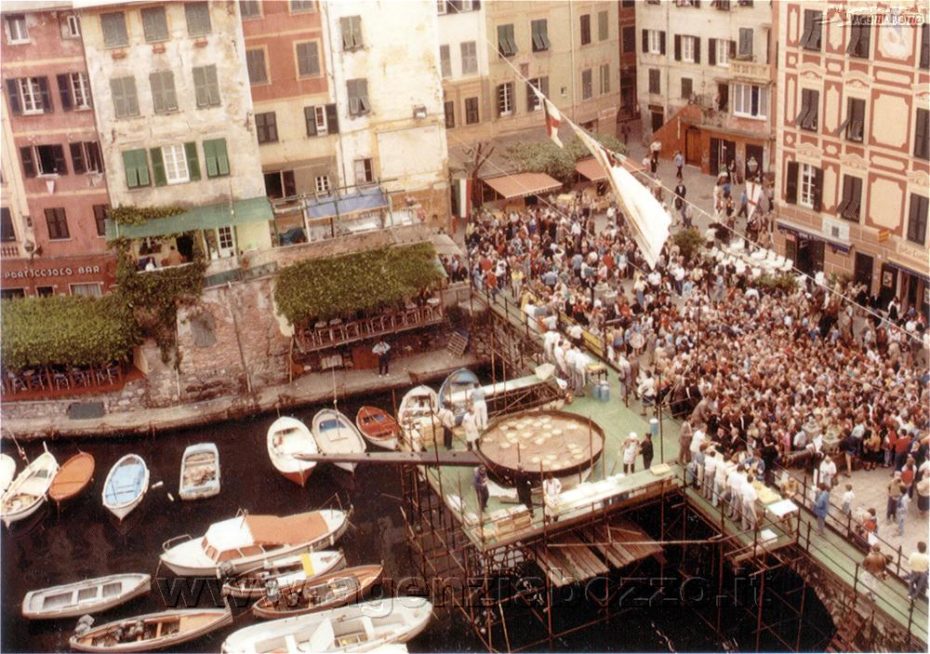
Meanwhile, over in Camogli, in Liguria, the patron saint of fishermen, Saint Fortunato is honoured with – what else? – a giant frying pan measuring nearly four metres in diameter. On the second Sunday of May, the cooks fry up over 30,000 fish dishes for the townspeople in what is also surely an homage to Christ himself.
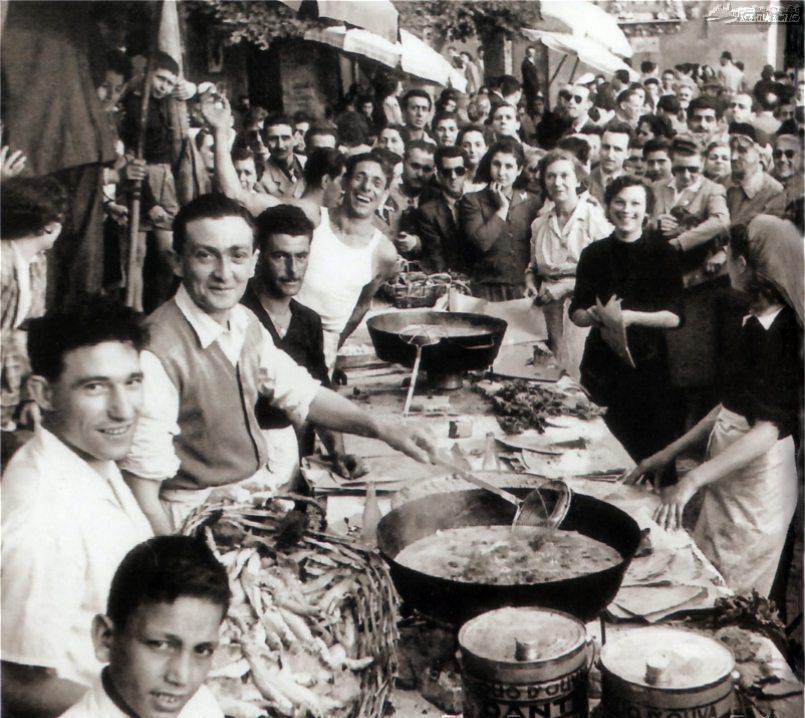
Lasting anything from a weekend to a fortnight, sagre kick off every evening with long queues to place food orders. The menu focuses on the star ingredient or recipe – for example it could be tomatoes in general, or a specific type of tomato sauce. From here, you are given just a handful of options, which generally come down to which you would prefer your local speciality to be served on: gnocchi or spaghetti.
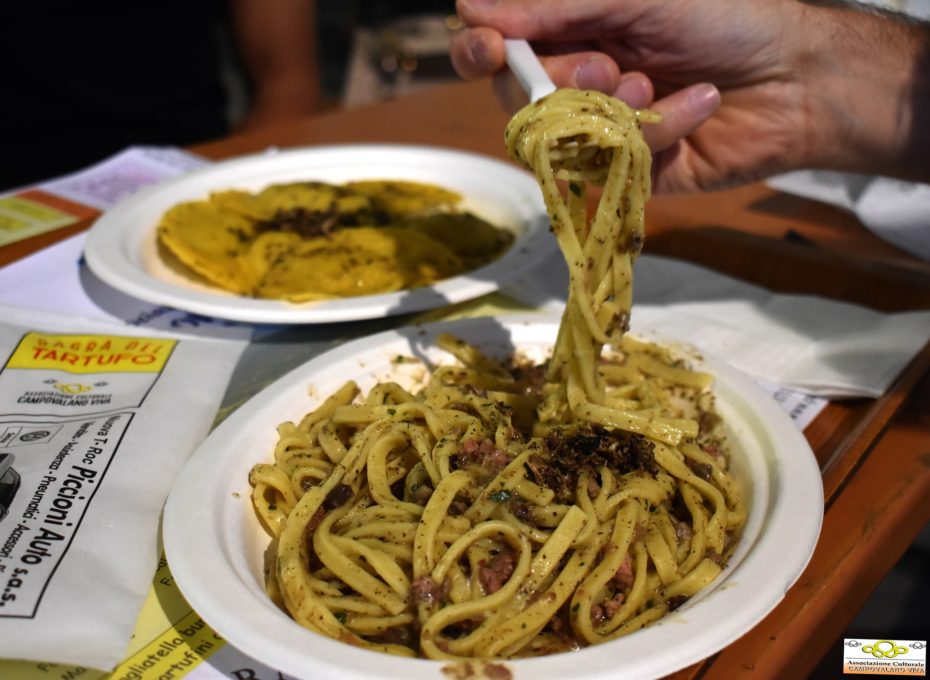
With your order placed, it’s time to squeeze onto one of the long, communal benches where practically the whole town already seems to be seated. Everybody chatters across the tables as they await their food and drink to be delivered. This is an excellent opportunity to put those hours spent on Duolingo to good use!
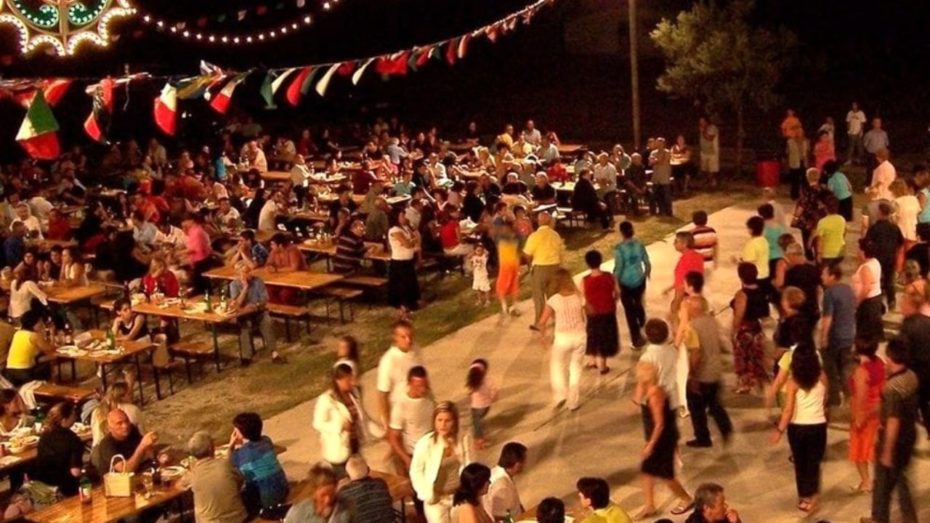
Even if you have literally no idea what you’ve just ordered – Sagra Delle Sfogline, anyone? – have no doubt that you’re about to enjoy the very best version of it. The cooks hustle to get a spot in the kitchen. There’s a real point of pride in serving your entire community its favourite food, just like mamma used to make. It’s no surprise, then, that the role is broadly taken on by mammas and nonnas.
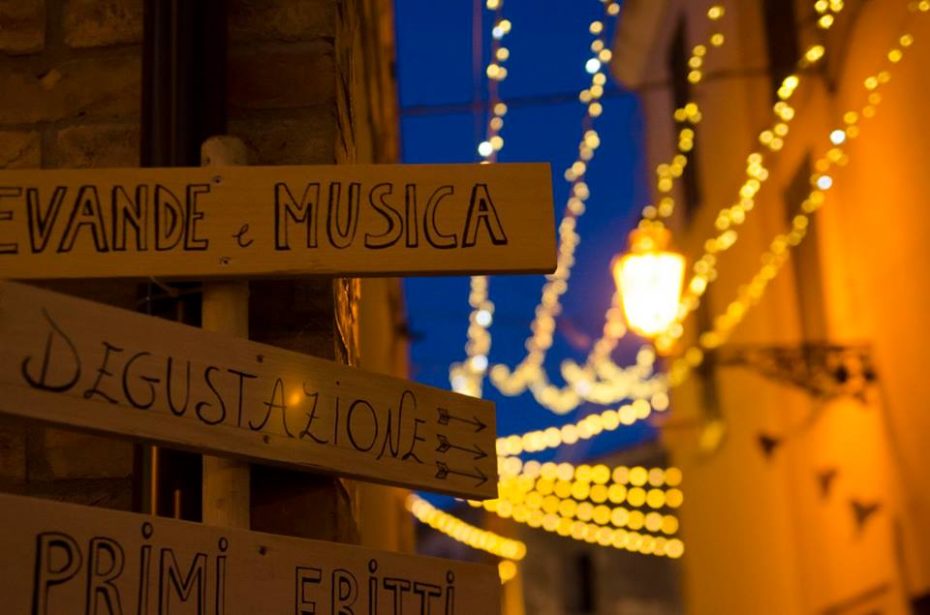
As the night wares on and carafes of vino continue to flow, these gatherings also become an opportunity to show off your dance moves. Whether the town has put on a band or hired a DJ, it’s not long after the first diners have digested that the dance floor begins to fill. Expect an almost entirely Italian set list, ranging from the latest hits to traditional tunes that everybody – kids, parents, grandparents – knows not only the words but the moves to. The whole ambience is a bit like being at a wedding you’ve been inexplicably invited to or, better yet, in a Fellini film.


